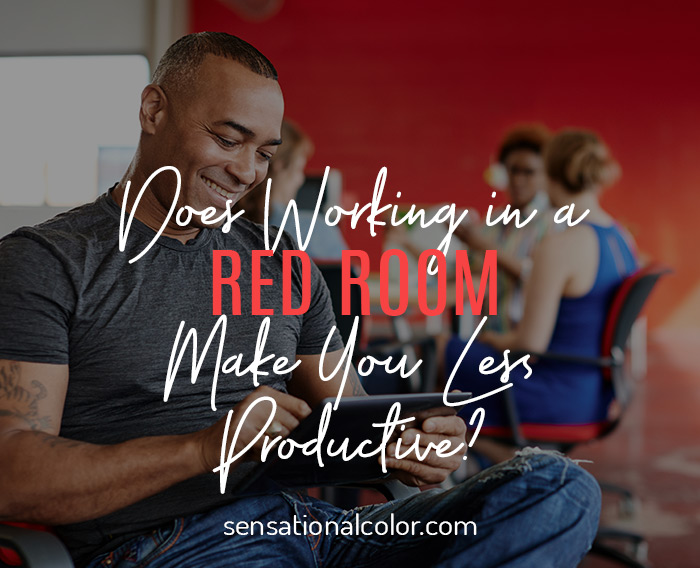The New York Times ran an interesting article in the science section yesterday on the color red, called: How Do We See Red? Count the Ways. One of the ways that immediately caught my attention was how working in a red room affects productivity.
One of the many aspects of red that they noted: Given red’s “pushy” reputation, design experts long thought people felt uncomfortable, and their work quality suffered when confined to a red room.
But when Dr. Nancy Kwallek, a professor of interior design at the University of Texas at Austin, recently compared the performance of clerical workers randomly assigned for a week to rooms with red, blue-green or white color schemes, she found that red’s story, like the devil, is in the details.
Dr. Kwallek On How A Red Room Affects Productivity
Workers who have trouble blocking out noise and other distractions during the workday did indeed prove less productive and more error-prone in the red rooms than did their similarly thin-skinned colleagues in the turquoise rooms.
For those employees who were rated as good screeners, however, and able to focus on their job regardless of any ruckus around them, the results were flipped. Screeners were more productive in the red room than the blue. “The color red stimulated them,” she said, “and they thrived under its effects.”
And the subjects assigned to the everyday, vanilla settings, of a style familiar to the vast majority of the corporate labor force? Deprived of any color, any splash of Matisse, they were disgruntled and did the poorest of all. Read the New York Times article>>
Infographic: Productive Palette: How Color Can Influence Workplace Behavior
You might blame a lack of motivation at work on the previous night’s sleep or the project you’re on or a droning series of meetings. But what about color? The color that surrounds you during your work day plays a bigger part in your productivity than you might imagine. The reason why is that color has a profound effect on the brain, causing it to feel tranquil or depressed, hungry or excited.
For workspaces, that means some colors are better suited to the goal of some spaces than others. For example, blue tends to engender feelings of tranquility and calm, making it a good companion for brainstorming areas. White, on the other hand, obviously offers a spaciousness that’s enviable for creativity. How you use color will help determine how well various spots in your office work to their intended goal. Want more advice on color in the workplace? Use this graphic for some ideas.
Feature Image Credit: Shutterstock



